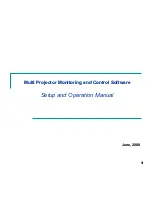
Copyright © Acronis, Inc., 2000-2010
373
Cleanup consists in applying to an archive the retention rules set by the backup plan (p. 370) that
produces the archive. This operation checks if the archive has exceeded its maximum size and/or for
expired backups. This may or may not result in deleting backups depending on whether the retention
rules are violated or not.
For more information please refer to Retention rules (p. 40).
Console (Acronis Backup & Recovery 10 Management Console)
A tool for remote or local access to Acronis agents (p. 368) and Acronis Backup & Recovery 10
Management Server (p. 378).
Having connected the console to the management server, the administrator sets up and manages
backup policies (p. 370) and accesses other management server functionality, that is, performs
centralized management (p. 372). Using the direct console-agent connection, the administrator
performs direct management (p. 373).
Consolidation
Combining two or more subsequent backups (p. 369) belonging to the same archive (p. 369) into a
single backup.
Consolidation might be needed when deleting backups, either manually or during cleanup (p. 372).
For example, the retention rules require to delete a full backup (p. 376) that has expired but retain
the next incremental (p. 377) one. The backups will be combined into a single full backup which will
be dated with the incremental backup's date. Since consolidation may take a lot of time and system
resources, retention rules provide an option to not delete backups with dependencies. In our
example, the full backup will be retained until the incremental one also becomes obsolete. Then both
backups will be deleted.
D
Deduplicating vault
A managed vault (p. 377) in which deduplication (p. 373) is enabled.
Deduplication
A method of storing different duplicates of the same information only once.
Acronis Backup & Recovery 10 can apply the deduplication technology to backup archives (p. 369)
stored on storage nodes (p. 379). This minimizes storage space taken by the archives, backup traffic
and network usage during backup.
Differential backup
A differential backup stores changes to the data against the latest full backup (p. 376). You need
access to the corresponding full backup to recover the data from a differential backup.
Direct management
Any management operation that is performed on a managed machine (p. 377) using the direct
console (p. 373)-agent (p. 368) connection (as opposed to centralized management (p. 372) when the
















































